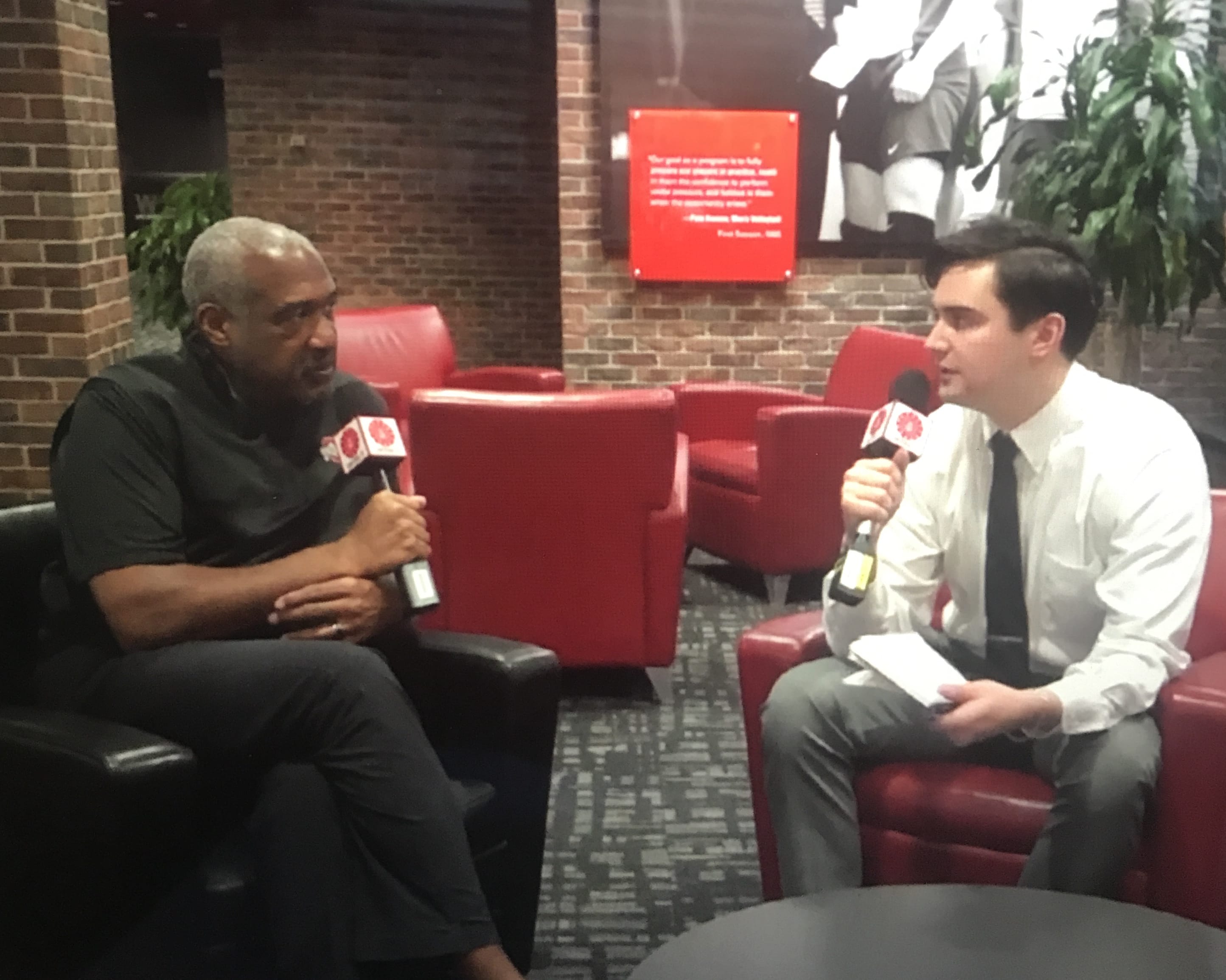March is steadily approaching, and in the college basketball world, that means excitement is on the horizon.
In the age of COVID-19 though, there are still plenty of details to work out and contingency plans to put in place to make the NCAA Division I Men’s Basketball Tournament –– the first since the 2018-19 season –– as safe as possible.
NCAA senior vice president of basketball Dan Gavitt spoke with the media on a Zoom call Thursday to discuss many of those plans as we get closer to the 67-game tournament that will take place across six venues in the state of Indiana this year.
Check out our rundown of the most pressing topics Gavitt addressed, including questions about backup venues, replacement teams, fan attendance and how conferences will determine their automatic qualifiers.
Replacement teams
While a final announcement has not yet been made, Gavitt said a plan is in place for dealing with the potential of an entire team having to pull out of the tournament due to a COVID-19 outbreak.
“I think we saw that in Columbus with The Basketball Tournament this summer and how they managed that with teams on standby,” Gavitt said. “We have a plan that the men’s basketball committee has approved, women’s basketball committee will look at tomorrow, and we think we have a good solution there.”
Gavitt said he hopes there won’t end up actually being the need for a replacement team to fill a void, but said teams will have to undergo seven consecutive daily tests before they arrive in Indianapolis, and then continued daily testing upon arrival.
Due to issues with competitive equity, replacement teams will not be an option once the tournament has already gotten underway, but Gavitt said the NCAA wants a full field of teams to start out with.
“We hope and think that the risk of an entire team being ineligible for the championship is low, but nevertheless, we know from what we’ve seen in the regular season that disruption is part of this,” Gavitt said.
Backup sites for tournament
In the event that the state of Indiana, or any specific venue site, sees an alarming outbreak prior to tournament play, the NCAA is prepared to move games to a new location.
One of those options is Ball State, which is located in Muncie, Indiana.
“One of our host institutions is Ball State University, and that would serve as a backup facility were we to need it if one of the six venues is unavailable,” Gavitt said. “And Ball State is also doing some other things to help us to host the tournament.”
Gavitt said Indiana State, located in Terre Haute, Indiana, is another site that could help out with any last-minute changes to the original plan.
“We do have some options and have some contingencies in place should we need them,” Gavitt said.
Fan attendance
Gavitt said the ability for players and coaches to have limited family in attendance was fundamental in determining the site of the tournament in the first place, and details have already been put into place to that end.
The travel party for each team will be 34, including coaches, student-athletes and administration, and each member will have six guests welcome, Gavitt said. That brings the total to around 200 for each team, and 400 total guaranteed.
There may also be general fan attendance, although no final decision has been made, and it would not reach above 25 percent capacity of each venue. Depending on the venue though, that percentage could be much lower.
“In many cases we won’t even come close to 25 percent by keeping that six feet of physical distance needed in each of the venues,” Gavitt said. “But maybe by the time we get to Lucas Oil Stadium, a much larger venue, we may have slightly closer to 20 or 25 percent capacity.”
Gavitt said he would expect an announcement to be made on fan attendance in the next several days.
Potential for conference tournament opt-outs
With regular season play winding down, conversations about the value of conference tournaments prior to the NCAA Tournament bubble have begun picking up.
Those same conversations have taken place among NCAA committees and administrators, and Gavitt said they decided that each individual conference should come to its own decision on how its automatic qualifier will be determined.
“We did a deep dive with conferences and ADs around this topic of what the real risk is around teams maybe opting out, and what the perceived risk is, and the committee ultimately decided that authority should still remain at the local and conference level,” Gavitt said.
The deadline for conferences to make their decision is next Friday, which Gavitt said is a year later than it would usually be due to the circumstances of this season.
As of now, the Big Ten Tournament is slated to begin with first round matchups on March 10, and end with the championship game on March 14 in Indianapolis.
